Narrative integration significantly enhances player engagement in multiplayer fantasy adventure games by fostering collaboration and emotional connections. This article explores the challenges developers face in maintaining coherent storytelling, the influence of cultural contexts on narrative styles, and innovative approaches such as dynamic storytelling and AI-driven experiences. Additionally, it highlights successful examples like “The Witcher 3” and discusses future trends that prioritise player agency and emotional resonance.
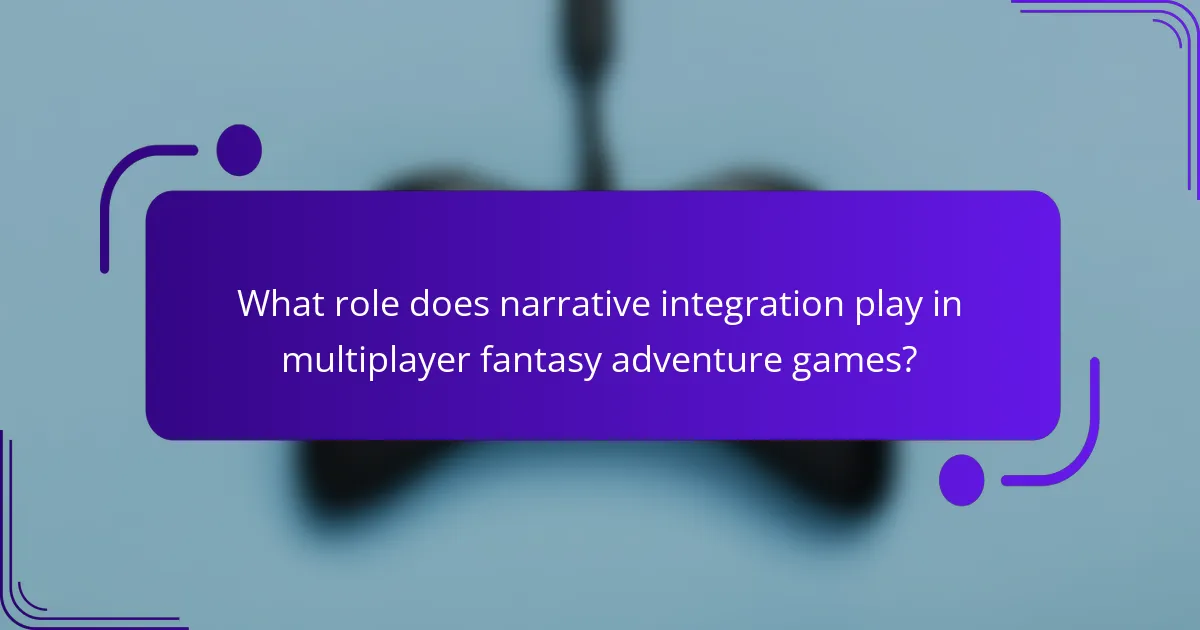
What role does narrative integration play in multiplayer fantasy adventure games?
Narrative integration is crucial in multiplayer fantasy adventure games as it enhances player engagement and collaboration. A well-crafted narrative fosters a shared experience, motivating players to explore the game world together. It creates emotional connections, driving players to invest in their characters and the storyline.
Furthermore, strong narrative elements often feature unique attributes, such as character backstories and plot twists, that differentiate gameplay. These elements encourage players to communicate and strategise, enriching the overall gaming experience. As a result, narrative integration not only supports individual player journeys but also strengthens the community within the game.
How does narrative enhance player engagement and immersion?
Narrative enhances player engagement and immersion by creating emotional connections and driving plot progression. Rich storytelling in multiplayer fantasy adventure games captivates players, making them feel invested in character journeys and world-building. This integration fosters collaboration and competition, as players navigate intertwined narratives, enhancing social interaction and shared experiences. Effective narratives also provide context for gameplay mechanics, enriching the overall experience and encouraging exploration.
What are the common narrative structures used in these games?
Common narrative structures in multiplayer fantasy adventure games include linear storytelling, branching narratives, and emergent storytelling. Linear storytelling follows a set path, ensuring players experience a cohesive plot. Branching narratives allow players to make choices that impact the story’s direction, enhancing engagement. Emergent storytelling arises from player interactions, creating unique experiences based on individual actions. These structures enhance player immersion and replayability, catering to diverse storytelling preferences.
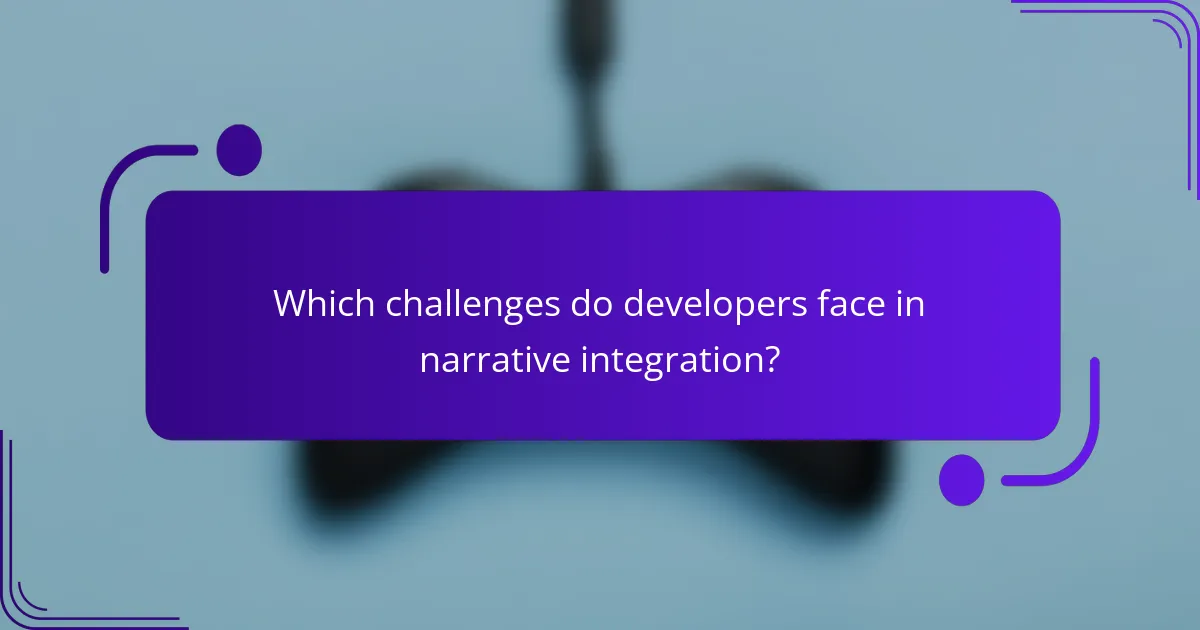
Which challenges do developers face in narrative integration?
Developers face challenges in narrative integration due to conflicting player choices, maintaining story coherence, and balancing gameplay mechanics with narrative depth. These issues can lead to fragmented storytelling and player disengagement.
The complexity of multiplayer environments adds to this difficulty. Developers must ensure that narratives remain engaging while accommodating diverse player interactions. This often requires innovative solutions to weave individual player stories into a cohesive overarching narrative.
Additionally, resource constraints can hinder the development of rich narratives. Limited time and budget may restrict the ability to create fully realised story arcs or character development, impacting the overall player experience.
Finally, testing narrative elements for effectiveness poses a challenge. Developers must gather player feedback to refine narratives, which can be time-consuming and complex, especially in multiplayer settings.
How do player choices impact narrative development?
Player choices significantly shape narrative development in multiplayer fantasy adventure games by influencing plot outcomes and character arcs. These decisions create a dynamic storytelling experience, allowing players to engage with the narrative on a personal level.
Choices can lead to multiple endings, altering the game’s world based on player actions. For instance, saving a character may result in future alliances, while ignoring them could lead to adversarial relationships. This branching narrative structure enhances replayability, as players explore different paths and their consequences.
Moreover, player choices impact character development, revealing unique attributes and motivations. Characters may evolve based on interactions, fostering deeper connections and emotional investment.
Overall, the integration of player choices into narrative frameworks enriches the gaming experience, providing players with agency and a sense of ownership over the story.
What technical limitations affect storytelling in multiplayer environments?
Technical limitations in multiplayer environments hinder storytelling by restricting narrative depth, player agency, and immersion. Bandwidth constraints can lead to lag, affecting real-time interactions and story progression. Limited server capacity restricts the number of concurrent players, impacting shared experiences. Additionally, varying player skill levels may dilute narrative engagement, as not all players can follow complex storylines simultaneously. Finally, technical glitches can disrupt the flow of storytelling, breaking immersion and affecting players’ emotional connections to the narrative.
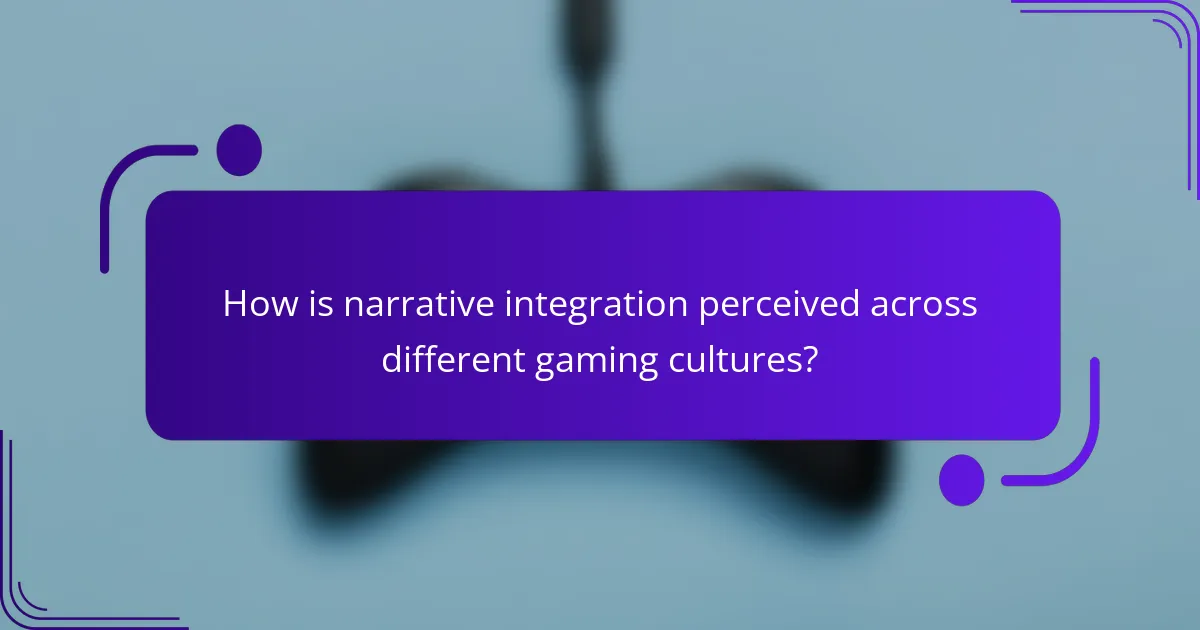
How is narrative integration perceived across different gaming cultures?
Narrative integration in multiplayer fantasy adventure games varies significantly across gaming cultures. In Western cultures, players often prioritise character-driven stories and immersive worlds that encourage exploration. In contrast, Eastern cultures may emphasise collective storytelling, where narratives evolve based on group interactions and decisions.
Cultural context influences player engagement with narratives. For example, in Japan, games often incorporate deep mythological themes and character development, fostering emotional connections. Meanwhile, Western games may focus on action-driven plots with clear objectives and individual achievements.
The perception of narrative integration also reflects social values. For instance, cooperative gameplay is more valued in cultures that emphasise community, leading to narratives that promote teamwork. Conversely, cultures that prioritise individualism may favour narratives that allow personal choice and agency.
This diversity in narrative integration highlights the importance of understanding cultural backgrounds in game design, as it shapes player expectations and experiences.
What are the preferences of North American players regarding storytelling?
North American players prefer immersive storytelling in multiplayer fantasy adventure games. They value narratives that enhance gameplay and foster emotional connections. Engaging characters and rich lore are essential for player investment. Players favour narratives that allow for player choice, impacting story outcomes. Additionally, cooperative storytelling experiences are increasingly sought after, as they promote shared adventures and community engagement.
How do Japanese players engage with narratives in multiplayer settings?
Japanese players engage deeply with narratives in multiplayer fantasy adventure games through collaborative storytelling and character development. They value immersive experiences that enhance social interaction and emotional investment. This engagement often manifests in role-playing elements where players contribute to the unfolding story, shaping outcomes based on their decisions.
Additionally, cultural references and mythological themes resonate strongly, enriching the narrative landscape. Players appreciate intricate plots and character arcs that reflect their values and collective experiences. As a result, narratives serve as a bridge for community building, fostering connections among players who share similar interests in storytelling.
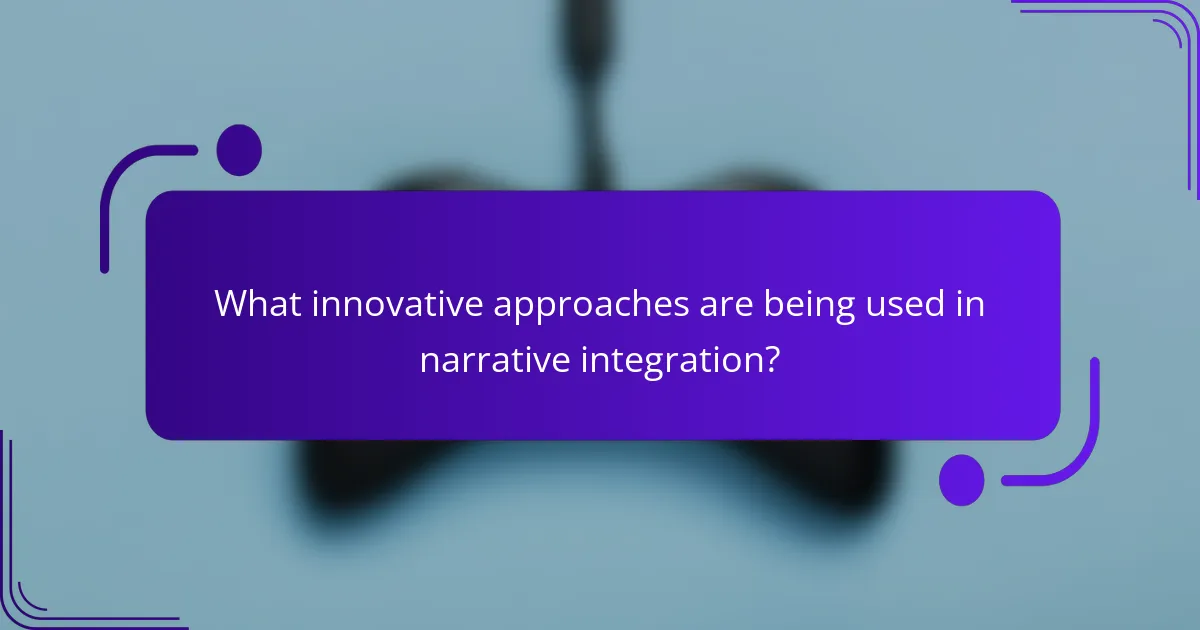
What innovative approaches are being used in narrative integration?
Innovative approaches in narrative integration for multiplayer fantasy adventure games include dynamic storytelling, player-driven narratives, and the use of artificial intelligence for personalised experiences. These methods enhance player engagement and create unique gameplay experiences.
Dynamic storytelling adapts based on player choices, allowing for multiple narrative paths. Player-driven narratives empower users to shape the story through their actions, fostering a sense of agency. AI technologies analyse player behaviour to tailor narratives, ensuring a personalised and immersive experience.
These strategies not only enrich the gaming experience but also promote replayability, as players explore different storylines and outcomes. Overall, innovative narrative integration techniques are transforming how stories are told in multiplayer fantasy adventure games.
How are artificial intelligence and procedural generation shaping narratives?
Artificial intelligence and procedural generation significantly enhance narratives in multiplayer fantasy adventure games by creating dynamic and immersive storytelling experiences.
AI algorithms analyse player behaviour and choices, enabling personalised storylines that adapt in real-time. Procedural generation allows for unique environments and quests, ensuring no two gameplay experiences are identical. This combination fosters player engagement and encourages exploration, as players encounter unexpected challenges and narratives.
Moreover, AI-driven NPCs exhibit advanced behaviours, enriching interactions and deepening the narrative context. These elements together create a rich tapestry of stories that evolve based on player actions, making the gaming experience more interactive and meaningful.
As a result, the integration of these technologies not only shapes individual narratives but also transforms how players perceive and engage with the game world.
What role does community feedback play in narrative evolution?
Community feedback is crucial for narrative evolution in multiplayer fantasy adventure games. It shapes storylines, character development, and gameplay mechanics based on player experiences and preferences.
Engaging with the community allows developers to identify popular themes and elements that resonate with players. For instance, feedback can highlight unique attributes in narratives, such as character arcs or plot twists that enhance immersion.
Additionally, community input can lead to the incorporation of rare attributes, like culturally specific lore or character backgrounds, enriching the game’s narrative depth. This collaborative approach fosters a dynamic storytelling environment, adapting to player expectations and enhancing overall engagement.
Ultimately, community feedback acts as a guiding force in narrative integration, ensuring that the evolving story remains relevant and captivating for players.
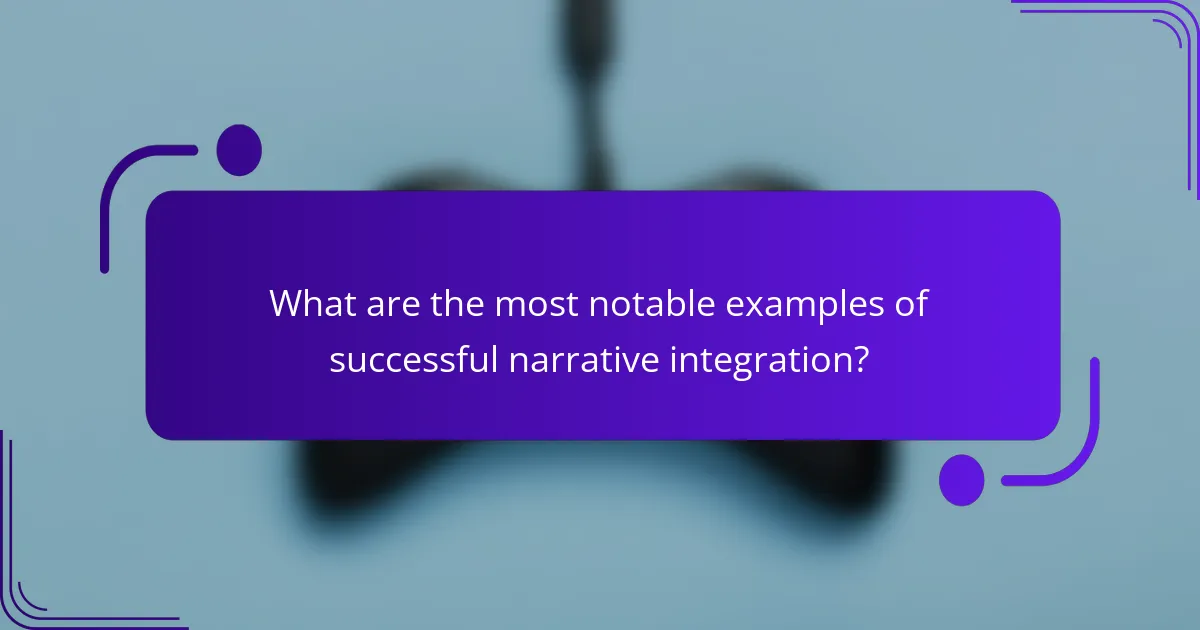
What are the most notable examples of successful narrative integration?
Successful narrative integration in multiplayer fantasy adventure games enhances player engagement through immersive storytelling. Notable examples include “The Witcher 3: Wild Hunt,” where player choices impact the narrative, and “Final Fantasy XIV,” which combines rich lore with cooperative gameplay. “The Elder Scrolls Online” offers a vast world where narratives intertwine with quests, while “Guild Wars 2” features dynamic events that shape the storyline based on player actions. Each of these games exemplifies how narrative depth can elevate the gaming experience.
Which games set benchmarks in storytelling within multiplayer formats?
Games that excel in storytelling within multiplayer formats include “The Elder Scrolls Online,” “Final Fantasy XIV,” and “Guild Wars 2.” These games integrate rich narratives that enhance player engagement and foster community interaction.
“The Elder Scrolls Online” offers expansive lore and quests that evolve with player choices. “Final Fantasy XIV” features a compelling main story and character development, drawing players into its world. “Guild Wars 2” utilises dynamic events that change based on player actions, creating a living narrative.
Each of these games demonstrates unique narrative integration, showcasing how storytelling can elevate multiplayer experiences. Their ability to intertwine player actions with overarching plots sets a benchmark for future titles in the genre.
How do these examples influence new game development?
Narrative integration in multiplayer fantasy adventure games significantly shapes new game development by enhancing player engagement and immersion. Developers draw inspiration from successful examples to create rich, interconnected storylines that encourage collaboration and emotional investment.
For instance, games that feature evolving narratives based on player choices foster a sense of agency, making players feel integral to the story. This approach can lead to unique gameplay experiences, as different player decisions yield diverse outcomes. Additionally, incorporating lore and world-building elements can enrich the gaming environment, providing context and depth that attract players.
As a result, the focus on narrative integration influences design decisions, from character development to quest structures. Developers strive to balance gameplay mechanics with storytelling to create a cohesive experience that resonates with players. This trend emphasises the importance of narrative as a core attribute in the evolution of multiplayer fantasy adventure games.
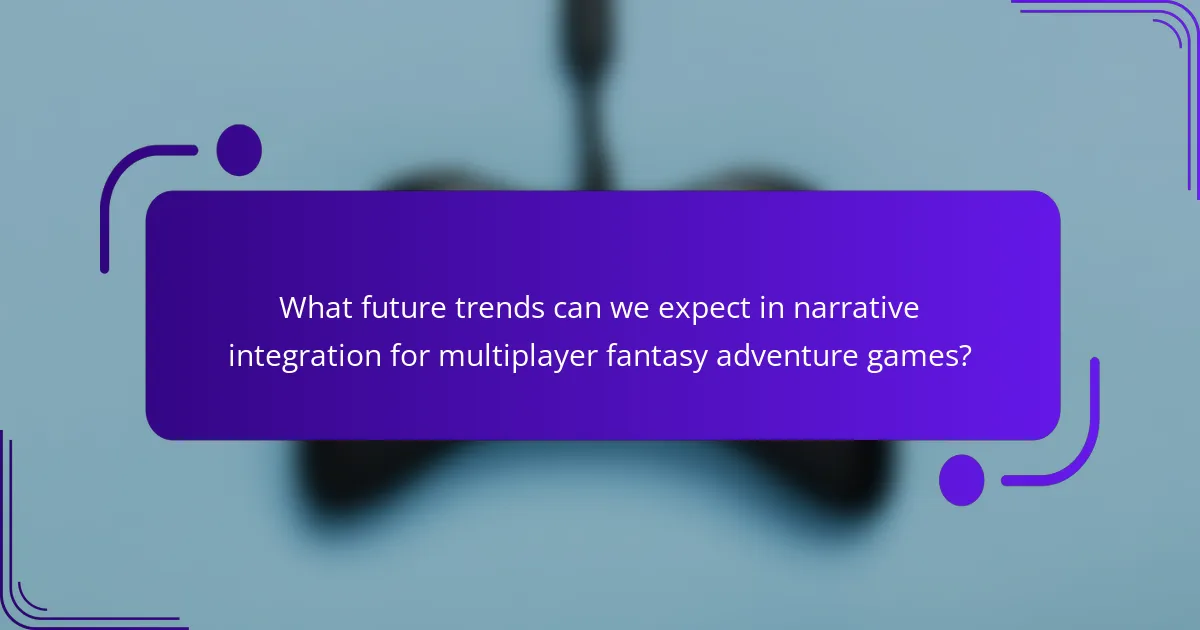
What future trends can we expect in narrative integration for multiplayer fantasy adventure games?
Future trends in narrative integration for multiplayer fantasy adventure games include enhanced player-driven storytelling, improved AI-driven narratives, and seamless cross-platform experiences. These trends will focus on deeper emotional engagement, allowing players to influence story outcomes significantly.
Emerging technologies, such as virtual reality and augmented reality, will create immersive environments that adapt to player choices. This approach enhances unique attributes of each player’s journey, making every experience distinct.
Additionally, collaborative storytelling will gain traction, enabling players to craft narratives together, fostering community engagement and shared experiences. Expect games to leverage data analytics to refine narratives based on player interactions, ensuring relevance and engagement.
Overall, these trends will shape a more dynamic narrative landscape in multiplayer fantasy adventure games, prioritising player agency and emotional resonance.
How might emerging technologies impact narrative delivery?
Emerging technologies significantly enhance narrative delivery in multiplayer fantasy adventure games. They enable immersive storytelling through virtual reality, augmented reality, and AI-driven narratives.
Virtual reality creates an interactive environment where players experience the story firsthand, increasing emotional engagement. Augmented reality overlays digital elements onto the real world, allowing players to interact with the narrative in their surroundings.
AI-driven narratives adapt to player choices, providing personalised story arcs. This unique attribute ensures that each player’s experience is distinct, enhancing replayability and player investment in the narrative.
Additionally, advancements in graphics and sound design contribute to a more immersive atmosphere, enriching the overall storytelling experience. These technologies collectively redefine how narratives are integrated and experienced in gaming.
What are the potential shifts in player expectations regarding storytelling?
Players increasingly expect deeper narrative integration in multiplayer fantasy adventure games. They seek immersive storytelling that enhances their gameplay experience. This shift highlights the demand for dynamic narratives that adapt based on player choices, fostering emotional connections. Additionally, players desire richer character development and world-building, with stories that evolve over time. The incorporation of player-driven narratives can lead to unique experiences, enhancing replayability and engagement.
What best practices should developers follow for effective narrative integration?
Developers should prioritise immersive storytelling, character development, and environmental design for effective narrative integration. These elements enhance player engagement and deepen the overall experience.
1. Create a cohesive world where the narrative and gameplay mechanics align seamlessly.
2. Develop multi-dimensional characters with backstories that evolve throughout the game.
3. Use environmental storytelling to convey plot points and character arcs visually.
4. Implement player choices that significantly impact the narrative outcome, fostering a sense of agency.
5. Regularly test narrative elements with players to ensure clarity and engagement.
6. Collaborate closely with writers and designers to maintain narrative consistency across all game aspects.